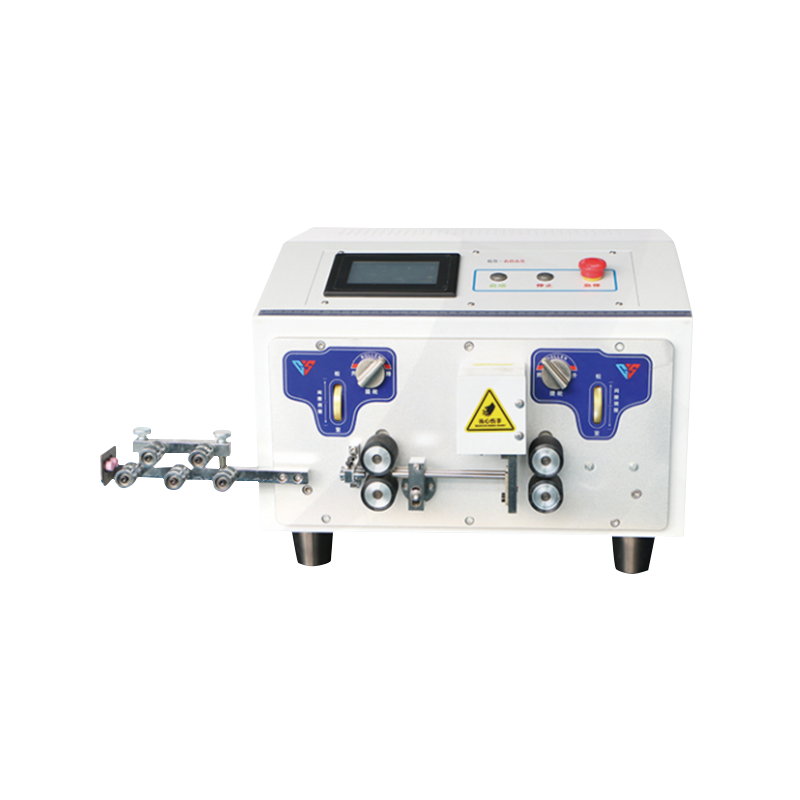What are the advantages of automatic wire stripping machine?
Sale Automatic Copper Wire Stripper Machine Manufacturer
In an era where industries prioritize speed, accuracy, and cost-effectiveness, the automatic stripping machine has emerged as a transformative force in material processing. From copper wire recycling to precision cable manufacturing, these advanced systems redefine how industries handle insulation, coatings, or outer layers. This article explores the key advantages of automatic stripping machines, including enhanced productivity, precision, reduced labor costs, elevated product quality, and minimized human error.
1. Boosting Production Efficiency
One of the compelling advantages of an automatic stripping machine lies in its ability to process large material volumes at speeds. Unlike manual or semi-automatic alternatives, these systems operate continuously with minimal downtime, making them indispensable for high-output industries. For example, in copper wire recycling plants, an automatic stripping machine can process over 2,000 kilograms of scrap cable per hour, extracting pure metal cores with consistent efficiency.
The integration of servo motors and programmable logic controllers (PLCs) allows automatic stripping machines to adjust stripping parameters on-the-fly. This adaptability ensures seamless transitions between material types—such as switching from PVC-insulated wires to silicone-coated cables—without manual recalibration. Automotive wire harness manufacturers, for instance, rely on these machines to strip thousands of cable ends daily, meeting tight production deadlines while maintaining throughput.
2. Achieving Micron-Level Precision
Precision is non-negotiable in sectors like aerospace or medical device manufacturing, where even minor material damage can to catastrophic failures. Automatic stripping machines address this challenge through advanced sensor technologies and closed-loop control systems. Laser-guided alignment mechanisms, for example, enable these machines to strip insulation layers as thin as 0.1 mm without nicking the conductor beneath.

In fiber optic cable production, where tolerances are measured in micrometers, automatic stripping machines eliminate variability caused by human fatigue. Optical fiber technicians report a 90% reduction in scrap rates after adopting these systems, as the machines consistently replicate predefined stripping depths. Similarly, leather manufacturers use automatic stripping machines to split hides into ultra-thin layers for luxury goods, ensuring uniformity across batches.
3. Reducing Labor Costs and Dependency
Labor-intensive stripping processes historically required teams of skilled workers, driving up operational expenses. The automatic stripping machine disrupts this model by automating repetitive tasks, allowing companies to reallocate human resources to higher-value roles. A case study from a mid-sized electronics factory revealed that replacing six manual stripping stations with two automatic stripping machines reduced labor costs by 65% within eight months.
Moreover, automatic stripping machines mitigate risks associated with workforce shortages or training gaps. In regions with aging populations, industries like shipbuilding now depend on these systems to prepare marine-grade cables—a task once reliant on specialized technicians. The machines’ user-friendly interfaces further simplify operations, enabling even novice operators to achieve expert-level results after minimal training.
4. Elevating Product Quality Through Consistency
Consistency is the cornerstone of industrial quality control, and automatic stripping machines deliver this through digitally repeatable processes. By eliminating manual handling variations, these systems ensure every stripped product meets identical specifications. For instance, EV battery manufacturers using automatic stripping machines report a 99.8% consistency rate in terminal preparation, critical for maintaining electrical conductivity across battery modules.
The pharmaceutical packaging industry provides another compelling example. When stripping protective films from medical-grade plastic components, automatic stripping machines maintain sterile conditions while achieving burr-free edges. This level of precision minimizes rejection rates during quality inspections, directly enhancing profitability.
5. Eliminating Human Error for Reliable Output
Human error—whether from miscalculations, fatigue, or distractions—has long been a bottleneck in material processing. Automatic stripping machines eradicate these risks through algorithm-driven operations. In high-voltage cable production, for example, manual stripping errors could leave microscopic insulation residues, risking short circuits. Automatic systems, however, use thermal cameras and pressure sensors to verify complete insulation removal before advancing to the next production stage.
The food processing industry also benefits from this reliability. When stripping coatings from conveyor belt components, automatic stripping machines follow HACCP-compliant protocols to prevent contamination—a task prone to oversights in manual workflows.
Industry-Specific Applications of Automatic Stripping Machines
Renewable Energy Infrastructure
Wind turbine cable manufacturers employ automatic stripping machines to prepare kilometer-long power lines resistant to weather. The machines’ ability to strip multiple insulation layers in a single pass accelerates project timelines for offshore wind farms.
Consumer Electronics
Smartphone producers utilize compact automatic stripping machines to process flexible printed circuit boards (FPCBs), where precision stripping ensures signal integrity in 5G devices.
Recycling and Sustainability
Scrap metal recyclers leverage heavy-duty automatic stripping machines to recover copper from end-of-life vehicles. One ton of stripped copper saves approximately 15 tons of CO2 emissions compared to mining new ore—a testament to the machine’s environmental impact.
Future Innovations in Automatic Stripping Technology
Emerging trends include AI-powered automatic stripping machines capable of self-optimizing blade angles based on material wear patterns. IoT-enabled models now transmit real-time performance data to cloud platforms, enabling predictive maintenance. Additionally, collaborative robots (cobots) are being integrated with automatic stripping machines to handle irregularly shaped materials, further expanding their application scope.
The automatic stripping machine represents more than just an upgrade to traditional tools—it embodies a paradigm shift in industrial material processing. By harmonizing speed, accuracy, and automation, these systems empower industries to meet escalating demands for quality and sustainability. As technology evolves, the role of the automatic stripping machine will expand, solidifying its status as a cornerstone of modern manufacturing and recycling ecosystems. From enabling greener supply chains to powering next-gen electronics, its impact resonates across global industries, proving that innovation and efficiency can coexist seamlessly.

 EN
EN  English
English русский
русский Español
Español عربى
عربى









